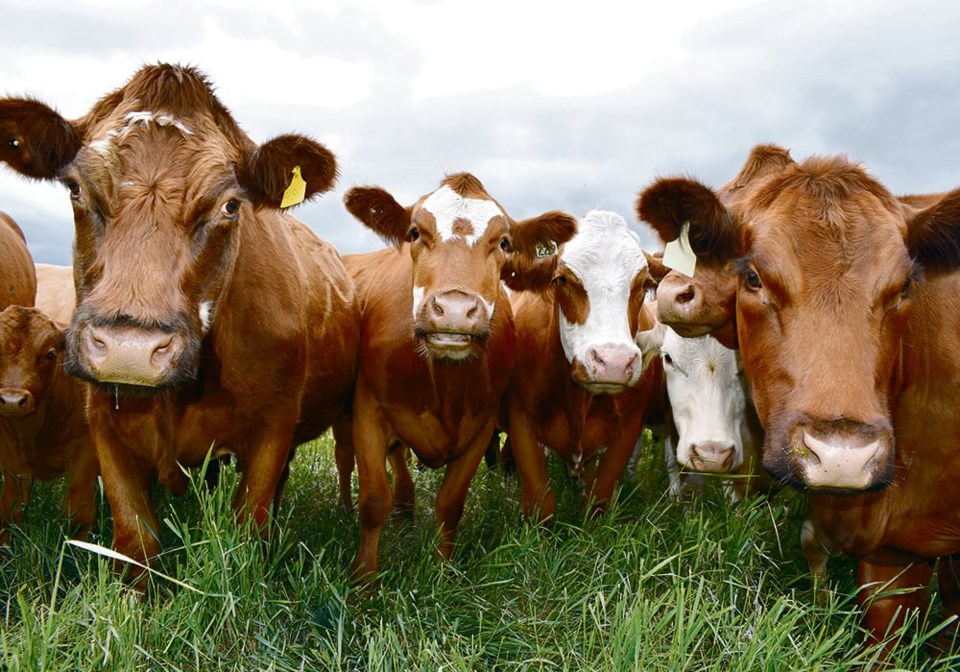WESTERN PRODUCER — A proposed multimillion-dollar national research program will seek to help beef producers breed cattle that emit less methane, which is a potent greenhouse gas linked to climate change.
“This is a substantial investment,” said John Basarab, head of beef operations at Livestock Gentec.
“But I feel strongly that this is an investment that the beef cattle industry needs to pay to address societal concerns regarding greenhouse gas emissions from their production system.”
Scientists have applied for federal funding to start looking for molecular breeding values for genetic traits that reduce methane, said Basarab. The proposed initiative depends on receiving approval from the Natural Sciences and Engineering Research Council of Canada (NSERC), he added.
He expected the cost will be in the millions of dollars because it will include emissions monitoring equipment priced at more than US$100,000 per unit. It will also require numerous researchers to operate such devices at several locations across Canada, he said.
The project will attempt to do for the beef industry what a similar Canadian research initiative did for the dairy industry, said Basarab. Lactanet and Semex were recently honoured with an International Dairy Federation Award for Innovation in Climate Action for their work helping develop the Methane Efficiency Evaluation for Holstein dairy cattle.
The United Nations Environment Programme has said methane is about 80 times more potent as a greenhouse gas than carbon dioxide during the first 20 years after it is released. It described agriculture as the leading contributor of atmospheric methane, with livestock accounting for roughly 32 percent of methane emissions.
However, the Canadian Roundtable for Sustainable Beef’s National Beef Sustainability Assessment and Strategy Report said the country’s cattle industry has significantly lowered its greenhouse gas emissions. It said levels were reduced by 15 percent for each kilogram of boneless and consumed beef between 2014 and 2021.
More beef is being produced by the same number of animals, improving the industry’s carbon footprint because fewer resources are needed, said the report.
Roundtable chair Ryan Beierbach told a recent news conference that it demonstrates how the sector is on track to meet its goal of reducing greenhouse gas emissions by 33 percent by 2030.
Livestock Gentec is an applied research and commercialization centre based at the University of Alberta that uses genomic technologies to promote livestock profitability and sustainability. It was recently honored with a Best in Agriculture Sector Award for Alberta at the annual AsTech Awards.
Basarab said although the proposed research program for methane traits in beef cattle will be led by the U of A and Livestock Gentec, it will likely also include Olds College, Lakeland College and the federal research centre in Lacombe, Alta. It will also include Dalhousie University in Nova Scotia and the University of Guelph in Ontario.
“However, we’ve got a way to go. I mean, the first thing is you’ve got to be successful in your application.”
The research will be conducted for about four years, after which scientists hope to create an index that will help beef producers select and breed cattle that emit less methane, said Basarab.
It will follow in the footsteps of existing indexes offered by Livestock Gentec, such as the Feeder Profit Index that allows producers to select sires whose progeny have better feed efficiency, growth, carcass value and net profit.
“We know how to make indexes, and we know how to get molecular breeding values and do the genetic evaluation using phenotypes and genotypes, so that’s well established,” said Basarab.
“As soon as we would measure the traits that we’re looking at, then it’s relatively straightforward to develop the molecular breeding values and create the index because the index is essentially created by an economic model, in other words, the costs and income associated with the traits in the production system you’re working with, so that is quite straightforward, in our view.”
Scientists will likely examine three or four traits that affect methane, he said.
“Which one of those is the best to use? We don’t know. We have ideas, but that, we don’t know.”
Researchers have already demonstrated the link between feed efficiency and methane, said Basarab.
“Now, when we come up with a methane trait, you always have to measure feed intake because methane is highly dependent on the amount of feed the animal consumes, and of course, what type of diet you’re feeding,” he said.
“If it’s a high forage diet, there’s more methane. If it’s a high grain diet, there’s less methane per unit of feed consumed, so you’ve got to measure those things.”
However, it is more difficult than simply measuring feed intake because scientists must also measure the methane emitted from the animal, he said.
“And so, it’s challenging, but it’s extremely interesting and it’s something we really need to do.”
Another problem is that breeding for a particular trait that reduces methane could have a negative impact on other production traits, such as the ability of cattle to efficiently digest feed needed to maximize their health, growth and profitability, said Basarab.
“You don’t want that to happen because all that happens is you’ve got an animal that is just moving feed through the rumen to reduce digestion and of course methane.”
The rumen also contains a microbiome of beneficial microbes and bacteria that aid and affect digestion, he said.
“It’s a very complicated system because you’ve got that microbiome and all these organisms, and then they interact with the host’s genetics … and that’s why it takes some time and lots of really smart people to work it out.”




